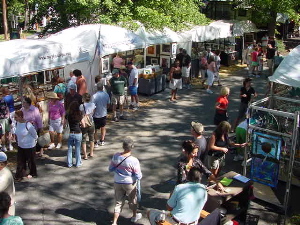 A.O. Scott, in his Times article “The Paradox of Art as Work,” begins:
A.O. Scott, in his Times article “The Paradox of Art as Work,” begins:
There are few modern relationships as fraught as the one between art and money. Are they mortal enemies, secret lovers or perfect soul mates? Is the bond between them a source of pride or shame, a marriage of convenience or something tawdrier?
He will go on to say some interesting things about how the economy of the arts in changing, but with that paragraph – and for that matter, the title of the piece (which he didn’t necessarily choose) – I think he really starts off on the wrong foot.
Art is costly to produce. It takes skill, the labor of the artist and all the other people needed to bring the artwork to its viewers, readers and listeners, raw materials, and a space to create the work. These are all costly inputs, and they must somehow be paid for. Sometimes there are enough potential revenues from buyers to cover all the costs, sometimes philanthropists or the state picks up some of the expenses, and sometimes the artist herself bears much of the cost, when there are not sufficient alternative funding sources. But this isn’t a “paradox.” It’s life. It’s true of every other good and service we consume. And it isn’t a function of the “capitalist” world. The costs of making art pre-date capitalism, and do not disappear in communist or anarchist societies – people’s time and effort, raw materials, space, always have alternative uses and so always carry an opportunity cost, regardless of how society is structured, and someone has to cover those costs. There is no reason to think art is different in this respect, or that it has a “fraught” relationship with money, that there is a “paradox.” Understanding the economics of the arts requires getting past the notion that there is something strange about the fact that artists buy and sell things, just like teachers and doctors and tailors.
The article goes on to talk about how the compensation for artists is changing as a result of various technologies, and how so many artists are now bearing much of the cost of producing their work, as customers and their intermediaries pay so little, and this part of the article is very much worth reading. But it is best read, I think, with clear eyes towards how markets work. Let’s leave the mystical musings on the relationships between art and money behind.

[…] 2014-05-12 Who Won The 2013 Curatorial Awards? AJBlog: Real Clear Arts | Published 2014-05-12 Art and money AJBlog: For What it’s Worth | Published 2014-05-11 Crack-Up: Taste, Anxiety and American […]